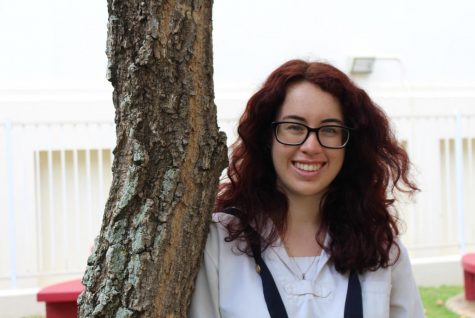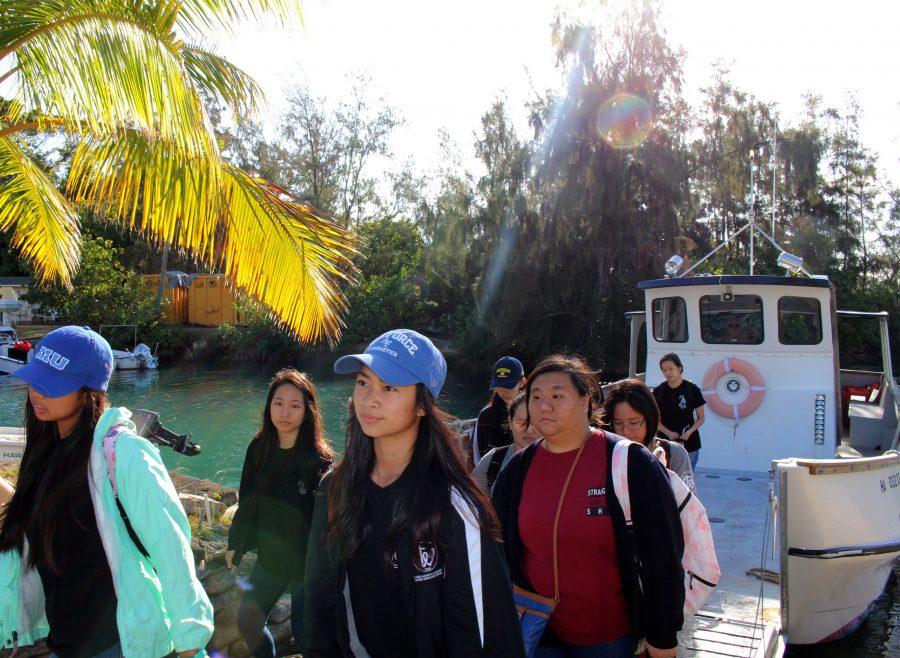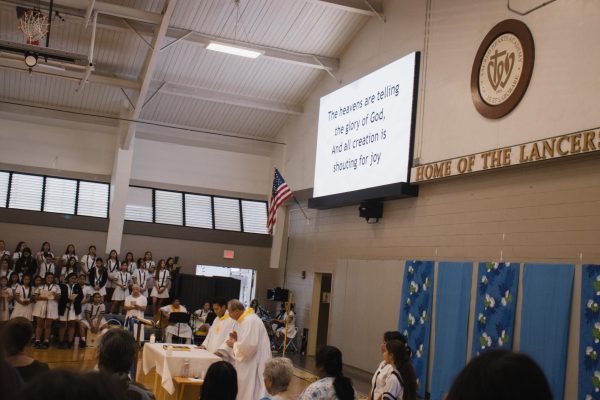Surf, sun and science on Coconut Island
Students from Sacred Hearts Academy’s Advanced Chemistry class couldn’t help but squeal, as water spilled into the tiny boat they were riding. It bulleted across Kaneohe Bay, splashing ocean water on those taking selfies in front of the postcard-esque background. Ahead of them was a small island, surrounded by hues of blue, that seemingly grew from beneath the horizon.
“My favorite thing about the field trip was the boat ride over,” said senior Zoierae Hill. “I’ve only ever been on a motor-powered boat once before, and I didn’t get to stand up while I was on it. This time, I got to dance and take pictures and walk around with my friends.”
Upon reaching Coconut Island, the group of students carefully stepped out of the boat, and whether realizing it or not, were embarking upon a world of scientific discovery.
The marine research facility offers world-class lab, field and genetic facilities to educators and students; it also provides convenient access to a diverse range of marine environments.
“Because of the extended time we are on the island, the students are able to plan and complete an inquiry lab investigation, which would not be possible in the 50-minute class periods we have at school,” teacher James Bell said.
The students learn how climate change affects coral by testing out different hypotheses. They experimented with dead fragments of shells and coral to simulate the natural habitats of local reefs.
Junior Dorothy Sanidad was eager to test out her hypothesis.
“(My hypothesis was) if rice coral and lace coral are exposed to seawater with increased levels of carbon dioxide, then the calcium and carbonate levels will increase more in the rice coral sample’s apparatus,” she said. “(It will do this) because the more porous nature of the rice coral will allow the acidic seawater to dissolve it quicker.”
The students learned that climate change affects the planet in many ways. Even more surprising to them was the information that this global phenomenon is affecting their island’s backyard–the ocean.
“Ocean acidification is one of the many ways climate change is affecting the world. The ocean is like a carbon sink, and when too much carbon is absorbed by the ocean, it causes the pH level to become more acidic and drop,” Hill said.
They learned that too much carbon also affects coral, since the skeleton upon which the coral polyps grow is made of calcium carbonate. Additionally, according to Hill, an increase of carbon in the water causes a decrease in carbonate ions. Thus, making it difficult for coral and other organisms, such as clams and sea urchins, to calcify.
“I never thought about the fact that islands and coastal places, whose economies rely heavily on tourism, such as Hawaii, would be greatly affected by the destruction of coral reefs,” Sanidad said.
This lab, ultimately, was meant to result in more than a one-time report. By learning about the effects of global warming on the environment, the students learned how small changes in their everyday lives will have a big impact on the world.
“I hope the lessons they learned about the potential impact of ocean acidification on coral reef ecosystems will motivate them to make some personal changes in their lives to decrease their carbon footprint,” Bell said.

Taylor McKenzie is currently a senior and a second-year Journalism student. She is the Vice President of Student Council, President of PAAC Club, member...































